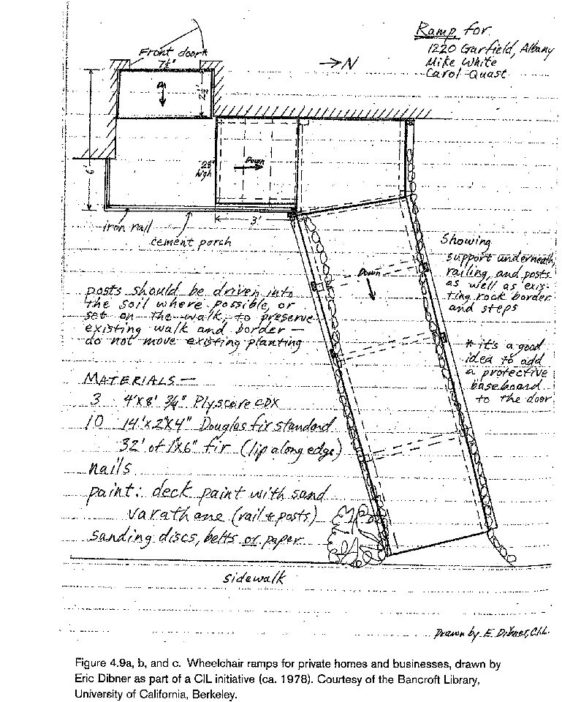An example of a ramp plan for a residence in Albany, CA, by Eric Dibner.
In the 1970s, accessible housing was extremely hard to come by. Although California state guidelines mandated that a portion of newly developed housing units be made accessible, a simultaneous wave of anti-development sentiment stalled much needed development.
In CIL fashion, members of the disabled community and allies mobilized around retrofitting current homes for people with disabilities.
Following the success of their curb ramp mapping in 1973, Ruth Grimes, Eric Dibner and others conducted a survey of accessible housing options for Berkeley’s Master Plan. Once the environmental surveys were finalized, the CIL reached out to eligible home owners and business to offer ramp design services at a competitive rate. Eric Dibner, who had taken some architectural drafting classes in college, created customized ramp design plans informed by national standards to show homeowners that accessibility for wheelchairs in their spaces was possible. The proposed ramps in backyards and domestic entryways suggested that accessibility was necessary in both public and private spaces.
